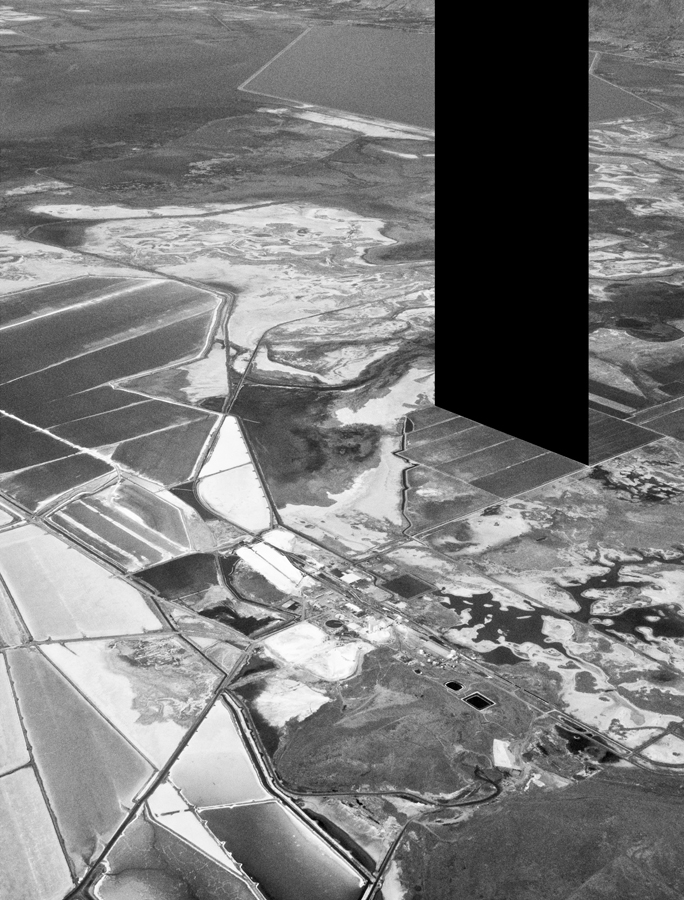Pakistan-born, New York-based artist Seher Shah has been making a name for herself recently via her meditations on brutalist architecture in solo shows at Jhaveri Contemporary (Mumbai, India), The Contemporary Austin (USA) and Green Art Gallery (Dubai, UAE) amongst others. She is best known for her graphic, often monochromatic drawings that take individual features of brutalist buildings and present them as abstract fragments, although she also works in photography and, more recently, sculpture. Her favoured mode of working sees forms of unforgiving modernist architecture flattened and abstracted into simple motifs which are then contrasted with more chaotic backgrounds that often depict buildings or landscapes in a state of flux.
It is possible to read her work as a critique of the heavy-handed assumptions behind modernist architecture – for example her works Mammoth: Aerial Landscape Proposals (2012) and Object Relic (Unite d’Habitation) (2011) superimpose flattened modernist structures by Le Corbusier on digital photographs and drawn renderings of an urban landscape. The disjuncture in scale between the architectural elements and the landscapes Shah juxtaposes them with, evokes the dominating effect that brutalist buildings often had over the surrounding landscape. It arguably also gestures at the hubris of modernist architects’ assumptions about how those in low-cost or public housing would like to live.
Shah’s practice picks apart those highminded assumptions. She initially trained in architecture and her practice reverses the architectural process whereby idealised designs on pieces of paper translate into buildings. Instead her works take those modernist buildings back towards drawings that are deliberately idiosyncratic and cheerfully dysfunctional.
Occasionally there’s a grudging nod of respect towards the brutalist desire to shoehorn the chaos of urban life into a more refined modernist sensibility. For instance, the sculptural shape in her recent work Landscape Object Vista I (2013) (in her solo show at Jhaveri Contemporary) acts rather neatly to frame the delicate drawing on Plexiglas of a modernist high-rise incongruously surrounded by what looks like fluttering bunting. Here the modernist motif (the sculptural element) is not overly dominating or threatening but works harmoniously with the more freewheeling element – which is certainly consistent with the aims of brutalist architects such as Alison and Peter Smithson.
Yet it is worth noting that Shah, in an interview with Asif Akhtar, for Naked Punch in January of this year, has pinpointed a scene out of Wong Kar-Wai’s film Chungking Express (1994) – in which a character runs through Chungking Mansions in Hong Kong – as one where a building works well as an object. The Mansions not only teems with an estimated 4,000 residents, but is the gathering place for minority groups in Hong Kong who use the food stalls, sari stores and clothing shops, backpackers who are drawn to the budget guest-houses, petty criminals, drug-pushers, sex-workers and illegal immigrants. It is reputedly host to people from at least 120 different countries. It is the opposite of the ordered, rational space that architects like Le Corbusier dreamed of. One rather suspects it is Shah’s ideal building.
Click here to visit the artist’s website.
Originally published in the Autumn & Winter 2014 issue of ArtReview Asia, in association with EFG International.
